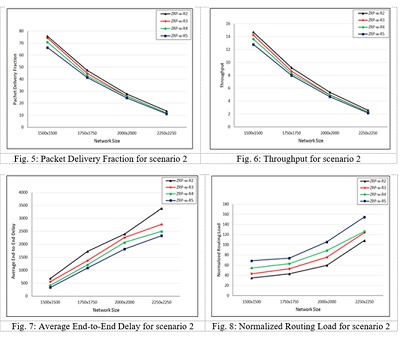| News Details |
The effect of network size and density to the choice of zone radius in ZRP
2022-05-29
Hussein M. Haglan, Salman Yussof, Khalid W. Al-Ani, Hothefa Shaker Jassim, Dhamea A. Jasm
Abstract
Mobile ad hoc network (MANET) is a network that consists of several nodes that connect without using a permanent infrastructure. Each node in MANET moves inside and outside of the network freely and randomly. The free and random movements of nodes may cause the topology of the network to change constantly. Therefore, the task of finding routes between nodes is a big challenge. Routing protocols in MANET can be divided into three categories, namely, proactive, reactive and hybrid routing protocols. Hybrid routing protocols such as the zone routing protocol (ZRP) combines the advantages of both proactive and reactive routing protocols by dividing the network area into many overlapping zones. Data transmission to nodes within the zone is done using a proactive routing mechanism, while data transmission to nodes outside the zone is done using a reactive routing mechanism. The zone radius in ZRP determines how much proactive and reactive routing is used, and therefore plays a key role in determining the performance of the network. In this paper, the performance of the ZRP routing protocol is evaluated using the NS2.33 network simulator. The focus of the research is to evaluate the ZRP performance concerning the network size and density to identify an optimum ZRP zone size that will provide good performance. The performance is evaluated by using four performance metrics which are normalized routing load, average end-to-end delay, throughput, and packet delivery fraction. The results show that ZRP produces the best performance when the zone radius size is equal to two hops.











